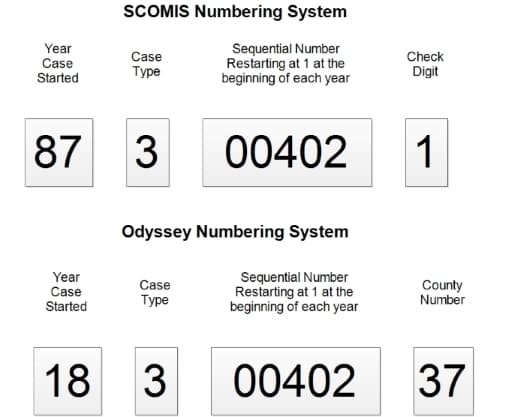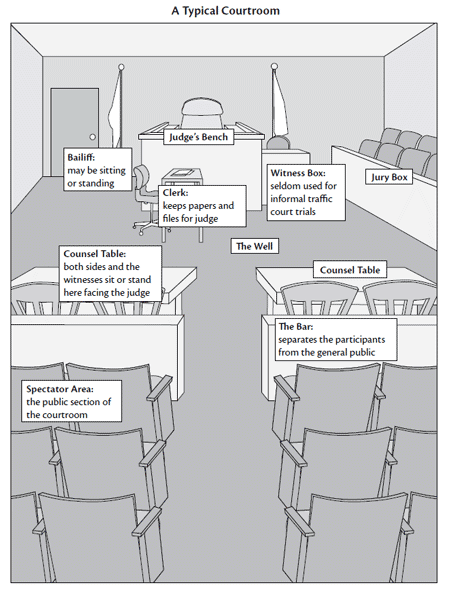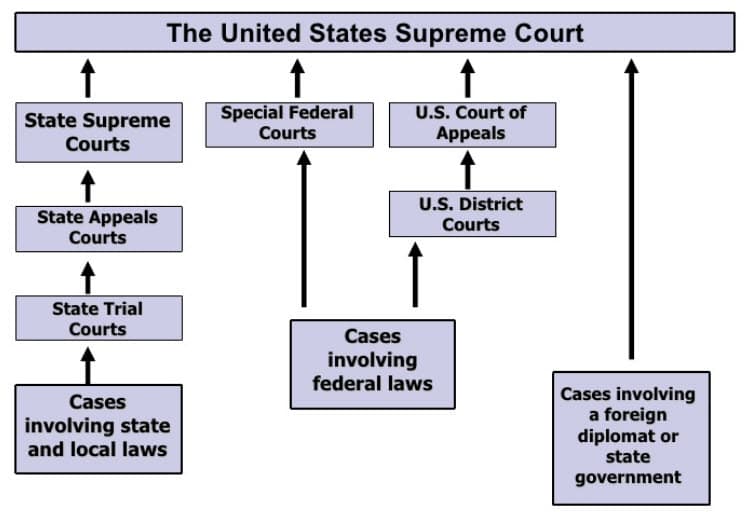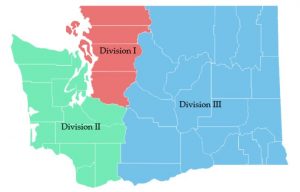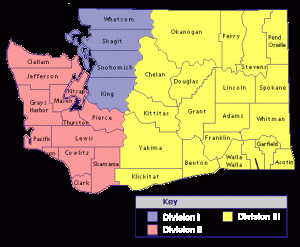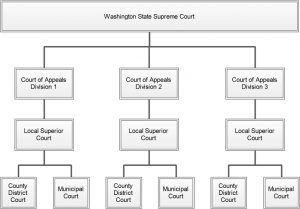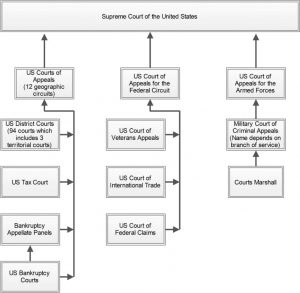This article is a public record found at the Municipal Research & Services Center for the State of Washington. Understanding county governmental structure is vital to understanding how to serve a county.
Introduction
Article XI, §§ 4 and 5 of the state constitution authorize the legislature to create a uniform system of government for counties. State law relating to counties is generally collected in Title 36 RCW. The uniform plan of county government provided by state law is the three-member commission form.
The constitution was amended in 1948 to provide counties the option of adopting a “home rule” charter. Adoption of a home rule charter allows a county to choose a different form of government from the commission form specified by statute. Six counties have elected to adopt charters – Clallam (1979), King (1969), Pierce (1981), Snohomish (1980), Whatcom (1979), and San Juan (2005).
Article XI, § 16 was added to the state constitution in 1972 to provide the option of a consolidated city-county government. Although some of the larger cities and counties have considered this option, no consolidated city-county governments have yet been created in Washington State.
In contrast to counties, cities and towns can choose from three forms of government provided by statute, including the mayor-council, council-manager, and commission form of government. In addition to the choice in form of government already provided by state law, cities also have the ability to adopt a home rule charter, subject to certain requirements, and provide for their own form of government. Unlike counties, cities and towns do not have separately elected officers in addition to the council members and mayor.
Commission Form of County Government
The form of government provided in state law for noncharter counties is the commission form. All noncharter counties must adopt this form of government. The only method by which a county can entirely change its form of government is to adopt a “home rule” charter. There are some population-based differences in the state laws governing counties, but the commission form of government is the same for all 33 noncharter counties.
The commission form is often referred to as the “plural executive” form of government. It is the oldest and most traditional county organizational structure. Under the commission form, the county governing body consists of an elected board composed of three commissioners who serve as the legislative body and also perform executive functions. Counties with populations greater than 300,000 can increase the size of the commission from three to five members. No single administrator or executive oversees a county’s operations under the commission form of government.
The board of county commissioners shares administrative and, to some extent, legislative functions with other independently elected county officials, including a clerk, treasurer, sheriff, assessor, coroner and auditor (or recorder). Other independently elected county officials and court officers include the county prosecuting attorney and the judges of the county superior court.
Although the county commissioners establish the budget and act as the county legislative body, the independent role of the other county elected officers makes county government quite different from other forms of municipal government that have separate legislative and executive branches.
“Home Rule” Charter Form of Government
Article XI, § 4 of the state constitution was amended in 1948 to provide the option for counties to adopt “home rule” charters to provide their own form of government. This home rule provision does not change the role and authority of counties, but it does allow counties to provide for a form of government different from the commission form prescribed by state law. By adopting a home rule charter, county voters can provide for appointed county officers to perform county functions previously performed by independently elected officials and can change the names and duties of the county officers prescribed by the constitution and state law. Home rule charters may not, however, change the elected status and duties of the county prosecuting attorney or superior and district court judges, or the jurisdiction of the courts.
Home Rule Charter County Authority
Home rule charter counties have broad authority to provide for purely local governance issues. The state supreme court has ruled, however, that, under the state constitution, county home rule charter rights are subordinate to express state law requirements that go beyond matters of local concern. The court has concluded that the state constitution expressly relegates county home rule charters to an inferior position vis-a-vis “the constitution and laws of this state” where the matter involves public policy of broad concern, expressed in general laws. For example, the state supreme court has concluded that home rule charter counties are free to provide a different time for election of county officers. However, they have also held that ordinances enacted to implement a county’s comprehensive land use plan as required by the Growth Management Act cannot be subject to amendment or repeal by referendum power granted in a county’s home rule charter.
After adoption of a charter, the powers, authority, and duties of county officers provided for by state law are vested in the county legislative authority, unless the charter expressly assigns powers and duties to a specific officer. The duties of the board of county commissioners and other elected officers may also be modified by charter. The board of commissioners and other elected officers may be entirely replaced, subject to certain restrictions.
Home Rule Charter Option for Power of Initiative and Referendum
Another reason for adopting a home rule charter is to provide the powers of initiative and referendum to the citizens of the county. All charter counties have provided for initiative and referendum powers.
Optional Municipal Code cities are authorized by state law to provide for the powers of initiative and referendum without adopting a home rule charter (RCW 35A.11.080 through 35A.11.100). Legislation was proposed in the 1997, 1998 and 1999 legislative sessions which would have allowed the board of county commissioners in noncharter counties to similarly authorize the use of initiative and referendum without the need to adopt a home rule charter. However, none of these proposals have been adopted.
Current Washington Charter Counties and Their Form of Government
Until 1969, all Washington counties operated under the commission form of government. However, since then, six counties have adopted home rule charters: Clallam (1979), King (1969), Pierce (1981), Snohomish (1980), Whatcom (1979) and San Juan (2005). Of the six home rule charter counties, five have adopted the council-executive form of government. The county executive is elected in King, Pierce, Snohomish, and Whatcom counties, and is appointed in San Juan County. Clallam County has retained the three-member commission form of government with responsibilities similar to boards of commissioners in noncharter counties, and also has an appointed county administrator.
In the five council-executive charter counties, the size of the council ranges from five members in Snohomish County to nine in King County. The council’s primary duty is to adopt a budget and establish county policy. The county executive or administrator is responsible for general administration and operation of the county. The executive or administrator is also responsible for proposing the budget and, in the case of an elected county executive, has a veto power over most council actions. All charter counties, except for San Juan County, have elected legislative bodies with partisan positions. The council positions in San Juan County are elected on a non-partisan basis. All of the four elected county executives are partisan positions.
A county charter can make any elected county official, except the prosecuting attorney and superior court judges, an appointive rather than an elective position. The coroner or medical examiner has been made an appointive position in every charter county, although in Clallam County, the Prosecuting Attorney serves as the ex officio coroner.
The six charter counties, however, vary greatly in their treatment of the offices of the assessor, auditor, superior court clerk, sheriff and treasurer. The assessor is an elected position in every county, although some make the position non-partisan. The auditor is an elected officer in all but one county (King), where the auditor is appointed by the council. The clerk is an appointive position in all but two counties (Snohomish and San Juan), with the appointing authority varying among the commissioners, the superior court judges, and the executive (with council confirmation). The sheriff is now an elected position in all but one county (Pierce), although most counties have made the position non-partisan. Finally, the treasurer continues to be an elected position in all but one county (King). Pierce County has combined the assessor and treasurer into a single elected position.
To determine the particular organization structure of a home rule county government, refer to the county’s charter.
Links to Home Rule Charters
1. Clallam County Charter
2. King County Charter
3. Pierce County Charter
4. San Juan County Charter
5. Snohomish County Charter
6. Whatcom County Charter
This quiz is for logged in users only.


